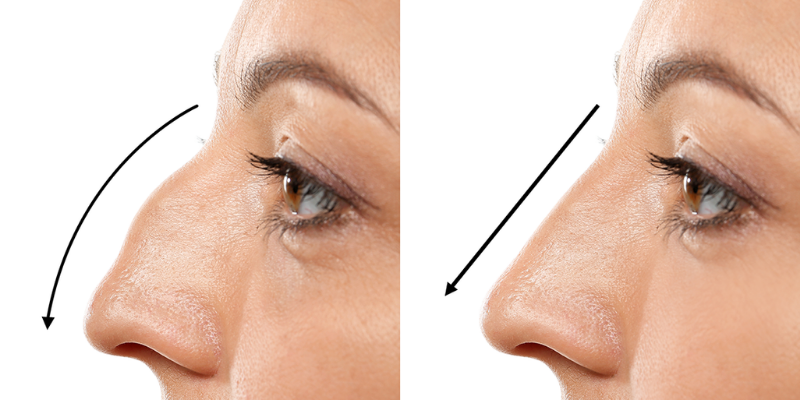Septo Rhinoplasty
What’s septo rhinoplasty? If you have problems with the way your nose looks or works, knowing the difference between septoplasty and rhinoplasty might help you choose the best course of action. Even though both procedures try to fix problems with the nose, their goals may be very different. Both surgeries are done by doctors so that their patients can improve their quality of life and feel better about themselves. If you’re worried about your nose and looking for a way to fix it, make sure you know the difference between rhinoplasty and septoplasty before making a choice.
Both septoplasty and rhinoplasty are medical procedures that can only do by a trained surgeon. Either a general or a local anaesthetic needs to be used.
A surgery called septorhinoplasty is a combination of the two. During the same procedure, the doctor changes the way the nose looks and fixes a septum that isn’t straight.
What’s Septo Rhinoplasty?
If you aren’t sure whether rhinoplasty or septoplasty is better for you, make an appointment with your surgeon, who should be a double board-certified face plastic surgeon with a lot of knowledge and experience in nasal surgery. If you have a crooked nose and a deviated septum that makes it hard for you to breathe, a septoplasty with rhinoplasty-like features can fix both the way your nose works and how it looks. The main goal of a septoplasty is to fix a deviated septum while keeping the nose’s shape on the outside. But it’s important to know that since the patient is already getting surgery, a septoplasty could be a good chance to fix a big or bulbous nasal tip, a dorsal hump, or other cosmetic problems.
Whether you get a septoplasty, rhinoplasty, or both, you should be ready to take time off work while your body heals and gets better. Most sick people are out of work for five to seven days. Some edoema may last for the first six to twelve months after a rhinoplasty, but most of it goes away in the first few weeks. After treatment, splints and stitches can put in the nose, but they are usually take out after a week.
Is Septo Rhinoplasty Same With Rhinoplasty?
Rhinoplasty is a surgery that lets people change the size, shape, and symmetry of their noses to make them look more even. Rhinoplasty may be your best option if your nose isn’t symmetrical, has a bump or depression on the bridge, has a big or drooping tip, or if your nostrils are too big or too wide.
You and your doctor can decide if the rhinoplasty will be an open or close surgery. Your columella, the bridge of tissue between your nostrils, will have a small scar from an open surgery. Scarring is not bad, and after healing done, it usually fades to a thin line that can’t see. Even though there no cuts on the outside of the nose after a closed rhinoplasty, it may not be the best option for everyone.
Each rhinoplasty treatment is different, and the surgeon will tailor it to your nose. This is because each patient has different aesthetic concerns. During different treatments, cartilage grafts from different parts of the nose, ear, or even a rib maybe used.
What’s Septoplasty?
Septoplasty is a type of surgery that fixes problems with how the nose works, like straightening a deviated or crooked septum. A deviated septum can happen later in life or cause by an injury to the nose in the past. If you have trouble breathing out of one or both nostrils or if you’ve hurt your nose in a way that makes it hard for you to breathe, you may be a good candidate for a septoplasty to straighten your deviated septum and improve your breathing.
A septoplasty can do with either a closed or an open surgery, depending on how bad your septal deviation is. During a closed surgery, a small cut made in the inside of the nose (the mucosa) to get to the cartilage and bone of the septum. The septum can then be either partially remove or completely fix with grafts, depending on what each patient needs.
Septoplasty Vs. Rhinoplasty
General anaesthesia is usually use for both surgeries, but if your nose only needs minor work, you and your doctor may decide to use a local anaesthetic and intravenous sedation instead. Also, both of these procedures often do without you staying in the hospital. So you can go home the same day. Both surgeries usually take less than three hours. However, the length of time depends on how many problems need to fix.
You and your surgeon will decide together on the best way to deal with your problems. He or she can answer any questions you have about either surgery so you know what to expect and feel confident in your care.


